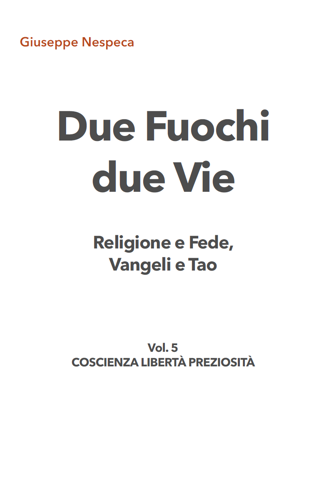The different commandments of the Decalogue are really only so many reflections of the one commandment about the good of the person, at the level of the many different goods which characterize his identity as a spiritual and bodily being in relationship with God, with his neighbour and with the material world. As we read in the Catechism of the Catholic Church, "the Ten Commandments are part of God's Revelation. At the same time, they teach us man's true humanity. They shed light on the essential duties, and so indirectly on the fundamental rights, inherent in the nature of the human person".22
The commandments of which Jesus reminds the young man are meant to safeguard the good of the person, the image of God, by protecting his goods. "You shall not murder; You shall not commit adultery; You shall not steal; You shall not bear false witness" are moral rules formulated in terms of prohibitions. These negative precepts express with particular force the ever urgent need to protect human life, the communion of persons in marriage, private property, truthfulness and people's good name.
The commandments thus represent the basic condition for love of neighbour; at the same time they are the proof of that love. They are the first necessary step on the journey towards freedom, its starting-point. "The beginning of freedom", Saint Augustine writes, "is to be free from crimes... such as murder, adultery, fornication, theft, fraud, sacrilege and so forth. When once one is without these crimes (and every Christian should be without them), one begins to lift up one's head towards freedom. But this is only the beginning of freedom, not perfect freedom...".23
14. This certainly does not mean that Christ wishes to put the love of neighbour higher than, or even to set it apart from, the love of God. This is evident from his conversation with the teacher of the Law, who asked him a question very much like the one asked by the young man. Jesus refers him to the two commandments of love of God and love of neighbour (cf. Lk 10:25-27), and reminds him that only by observing them will he have eternal life: "Do this, and you will live" (Lk 10:28). Nonetheless it is significant that it is precisely the second of these commandments which arouses the curiosity of the teacher of the Law, who asks him: "And who is my neighbour?" (Lk 10:29). The Teacher replies with the parable of the Good Samaritan, which is critical for fully understanding the commandment of love of neighbour (cf. Lk 10:30-37).
These two commandments, on which "depend all the Law and the Prophets" (Mt 22:40), are profoundly connected and mutually related. Their inseparable unity is attested to by Christ in his words and by his very life: his mission culminates in the Cross of our Redemption (cf. Jn 3:14-15), the sign of his indivisible love for the Father and for humanity (cf. Jn 13:1).
Both the Old and the New Testaments explicitly affirm that without love of neighbour, made concrete in keeping the commandments, genuine love for God is not possible. Saint John makes the point with extraordinary forcefulness: "If anyone says, 'I love God', and hates his brother, he is a liar; for he who does not love his brother whom he has seen, cannot love God whom he has not seen" (Jn 4:20). The Evangelist echoes the moral preaching of Christ, expressed in a wonderful and unambiguous way in the parable of the Good Samaritan (cf. Lk 10:30-37) and in his words about the final judgment (cf. Mt 25:31-46).
15. In the "Sermon on the Mount", the magna charta of Gospel morality,24 Jesus says: "Do not think that I have come to abolish the Law and the Prophets; I have come not to abolish them but to fulfil them" (Mt 5:17). Christ is the key to the Scriptures: "You search the Scriptures...; and it is they that bear witness to me" (Jn 5:39). Christ is the centre of the economy of salvation, the recapitulation of the Old and New Testaments, of the promises of the Law and of their fulfilment in the Gospel; he is the living and eternal link between the Old and the New Covenants. Commenting on Paul's statement that "Christ is the end of the law" (Rom 10:4), Saint Ambrose writes: "end not in the sense of a deficiency, but in the sense of the fullness of the Law: a fullness which is achieved in Christ (plenitudo legis in Christo est), since he came not to abolish the Law but to bring it to fulfilment. In the same way that there is an Old Testament, but all truth is in the New Testament, so it is for the Law: what was given through Moses is a figure of the true law. Therefore, the Mosaic Law is an image of the truth".25
Jesus brings God's commandments to fulfilment, particularly the commandment of love of neighbour, by interiorizing their demands and by bringing out their fullest meaning. Love of neighbour springs from a loving heart which, precisely because it loves, is ready to live out the loftiest challenges. Jesus shows that the commandments must not be understood as a minimum limit not to be gone beyond, but rather as a path involving a moral and spiritual journey towards perfection, at the heart of which is love (cf. Col 3:14). Thus the commandment "You shall not murder" becomes a call to an attentive love which protects and promotes the life of one's neighbour. The precept prohibiting adultery becomes an invitation to a pure way of looking at others, capable of respecting the spousal meaning of the body: "You have heard that it was said to the men of old, 'You shall not kill; and whoever kills shall be liable to judgment'. But I say to you that every one who is angry with his brother shall be liable to judgment... You have heard that it was said, 'You shall not commit adultery'. But I say to you that every one who looks at a woman lustfully has already committed adultery with her in his heart" (Mt 5:21-22, 27-28). Jesus himself is the living "fulfilment" of the Law inasmuch as he fulfils its authentic meaning by the total gift of himself: he himself becomes a living and personal Law, who invites people to follow him; through the Spirit, he gives the grace to share his own life and love and provides the strength to bear witness to that love in personal choices and actions (cf. Jn 13:34-35).
[Pope John Paul II, Veritatis Splendor nn.13-15]












